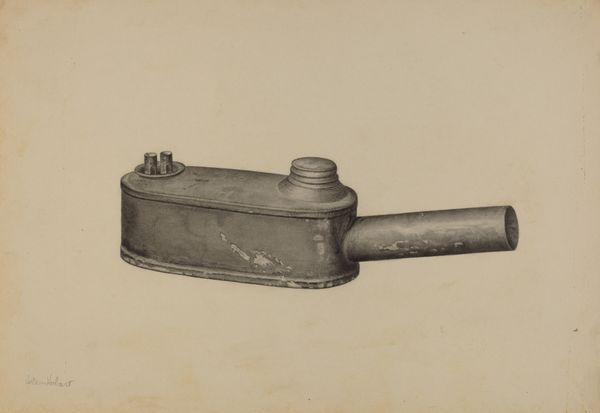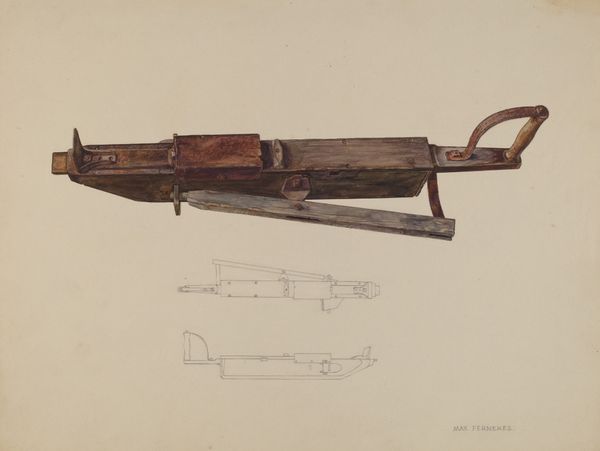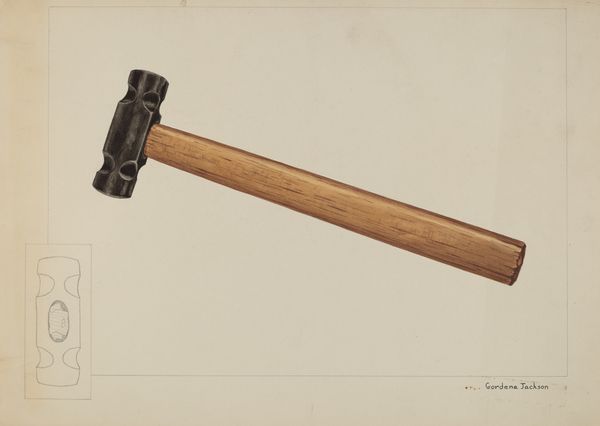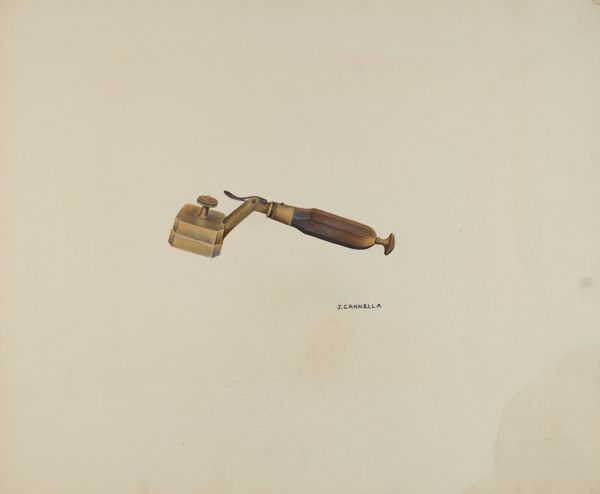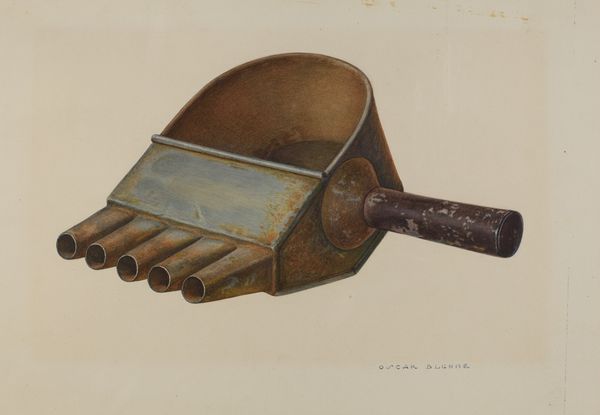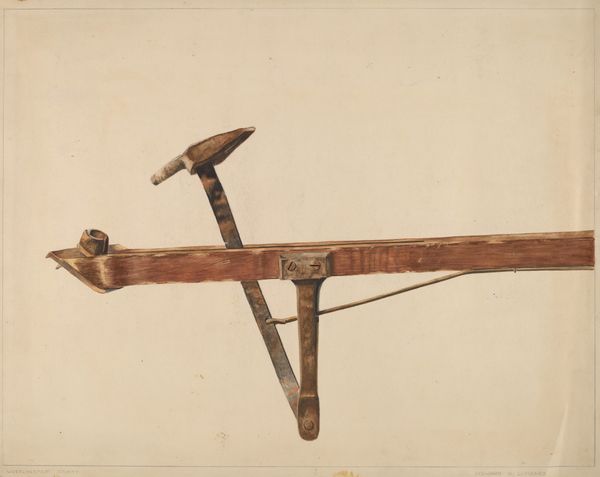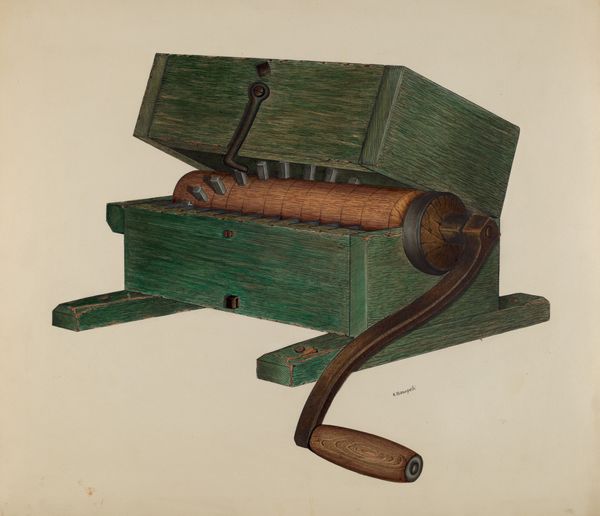
drawing, watercolor
#
drawing
#
charcoal drawing
#
watercolor
#
pencil drawing
#
watercolor
#
realism
Dimensions: Original IAD Object: 6 3/4" wide; 6" high
Copyright: National Gallery of Art: CC0 1.0
Curator: Welcome. Here we have Chris Makrenos's "Parlor Stereoscope," made around 1937. It appears to be a carefully rendered watercolor and drawing combination. Editor: My first impression is one of curious nostalgia. There’s a stillness here, but also a subtle commentary on the experience of spectatorship. It feels both handmade and incredibly precise. Curator: I find that Makrenos offers a window into early 20th-century domestic entertainment. The stereoscope, an instrument designed for viewing stereoscopic cards, speaks to a time when visual media was both a novelty and a communal experience, albeit an experience of illusion. It emphasizes themes around consumption and domesticity. Who has access to such objects, how are these commodities obtained, how are they consumed and by whom? Editor: Absolutely. And what interests me are the physical qualities rendered here. The drawing captures the particular wood grain and joinery. It focuses the labor involved in making the instrument itself. Consider the shift: From hand-crafted object, to photograph placed within, and then represented here again. The layering of representation really complicates any singular meaning of “realism”. It gives a nod to the history of manufacturing. How many people contribute labor to such an apparatus? And do all have equal access to view the content held within? Curator: Indeed. Its domestic setting allowed the user to transcend their immediate reality, promoting social values. This act of viewing becomes a site of both individual pleasure and social construction. How did gender, class, and race affect what someone would have seen through this lens? We must consider its place within a much larger matrix of power, privilege, and representation. Editor: This image can serve as a jumping off point for conversations around the relationship between manual labor and technological advancement. The artist shows an object intended for visual pleasure. But, simultaneously draws attention to the work and industry necessary to facilitate leisure and cultural experiences in this era. What, then, is progress, and at what cost is it bought? Curator: These nuances urge us to think critically not only about the art, but the societal context within which the viewer stood then and stands now. Editor: Yes, it invites contemplation about both the mechanics of perception and also production! Thank you for these additional lenses.
Comments
No comments
Be the first to comment and join the conversation on the ultimate creative platform.


